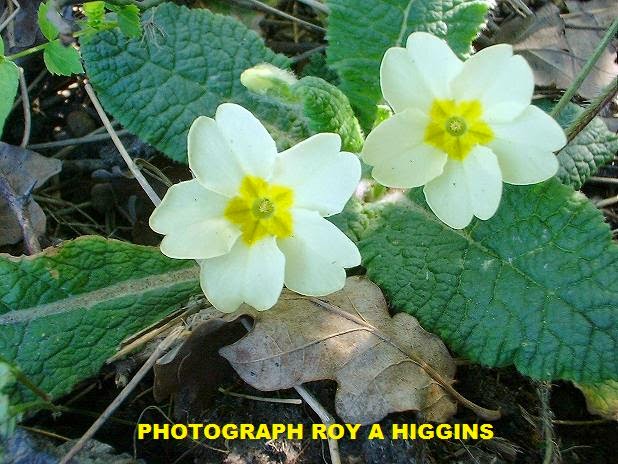For health reasons I have to walk on a daily basis, wind, rain, hail, or shine, I must partake in my daily exercise. I've decided to take with me a pocket sized Kodak camera to record anything that interests me. If you would like to accompany me on my monthly internet walks you are more than welcome to come along.
Daffodils are synonymous with April, so I must begin my journey through April with them. In Britain we have wild daffodils, they are small and grow in woodland, but the ones in the photograph are not of the wild variety, but garden escapees. How do daffodils escape from gardens you may well ask. One thing is for certain they didn't decide to relocate. I can understand seeds being carried on the wind or via the guts of birds, but it's difficult to understand how bulbs ended up growing by a stream, unless of course someone planted them, but why?
Local councils tend to plant daffodils along grass verges and on traffic islands, but not in a field next to a stream. These daffodils have been planted by Ribble Valley Borough Council on a grass verge outside of the Black Bull public house at Old Langho. They used to make great hoagies at the Black Bull with minted yogurt, perhaps they still do I'll have to re-visit and find out.
This is a picture of the church of St Leonards at Old Langho. The church was built in 1557. The stonework, windows, and many of the fittings, are thought to have been recycled, by local people, from nearby Whalley Abbey, following the dissolution of the monasteries by order of Henry V111, after a tantrum because the Pope refused to grant him an annulment from his wife Catherine of Aragon, which would enable him to marry his mistress Anne Boleyn.
In woodland and hedgerows grow wild primroses. Our gardens are full of primroses, of every hue, at this time of the year, given to mothers by small children on Mothers Day, to sit on windowsills in pots, or plant outside in borders or planters along with miniature daffodils, but this is the native variety and you can have it in any colour just as long as it's pale yellow.
This is the time of year for births in the animal world, and lambs are being born in large numbers during March and April. Farmers try to ensure that as many ewes as possible give birth to twins, for maximum profit at the auction, and here we have two such families wondering if I'm a threat.
Many calves have also been born, but we don't see them, as dairy herds are still undercover until the weather settles. This Friesian cow, and her calf, are enjoying a warm day outside. I don't know who the little brown one belongs to, perhaps the same mother. He's got his ears tagged and will probably be sold on the continent for veal, as the British are a bit squeamish about eating anything cute. He's certainly very interested in me.
This field is on Chapel Lane and when I came to live in the Ribble Valley in 1971 a chapel stood on this site, there are certainly no signs that it ever existed now. Perhaps Time Team will one day come to dig it up.
This field is on Chapel Lane and when I came to live in the Ribble Valley in 1971 a chapel stood on this site, there are certainly no signs that it ever existed now. Perhaps Time Team will one day come to dig it up.





.jpg)
No comments:
Post a Comment